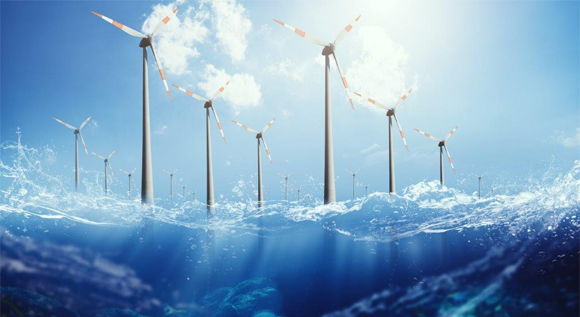Tidal currents and waves at researchers’ fingertips
A wave-current flume unparalleled the world over, a giant test stand for turbine blades and a new research park for wind energy – three new research facilities in the north of Germany are driving forward the expansion of wind energy.
 © Adobe Stock/m.mphoto
© Adobe Stock/m.mphoto
Wind energy is and will remain the key element of Germany’s energy supply. As increased use is being made of heat pumps and electric vehicles, the demand for electricity will continue to grow. This demand can only be met if wind energy is expanded quickly and efficiently.
Research and development can help us deploy optimised technologies to make the necessary expansion reliable and cost-effective. However, offshore wind turbines often operate under extreme conditions: strong winds, currents and, frequently, high waves. Across a large number of research projects, scientists are thus working to continuously optimise the turbines, but conducting on-site tests in the North and Baltic Sea costs a lot of time and effort.
Carrying out the tests in the large wave-current flume (the ‘GWK+’) in Hannover in Lower Saxony is much easier. The facility is open to research institutes and industrial companies. The wave-current flume is 300 metres long and can simulate both tidal movements and up to three-meter-high waves.
New current generation system for simulating the tides is at the heart of the GWK+.
The new current generation system for simulating the tides is at the heart of the GWK+. At up to 20,000 litres per second, it can generate massive tidal currents. This allows researchers to make realistic predictions on the loads that will be borne by the components across their entire life cycle. “This research infrastructure is unparalleled the world over, especially at this scale,” says Prof Dr Torsten Schlurmann of Leibniz University Hannover, who is heading the project, which has received around €35 million in funding from the Federal Ministry for Economic Affairs and Climate Action.
Small wave flume helps design experiments.
In order to assess which modifications to the flume might be effective or beneficial, the Technical University of Braunschweig is undertaking a sub-project, in which they have built a miniature version of the larger wave-current flume at a scale of 1:10. “This miniature GWK+ is still 40 metres long and equally unique,” says Prof Dr. Nils Goseberg of the Technical University of Braunschweig, who has been coordinating the work.
Offshore wind turbines to power the energy transition.
Offshore wind energy generation is taking on an ever more important role for the energy transition. Under the new Offshore Wind Energy Act, the expansion targets for offshore wind energy use were increased considerably at the beginning of this year to a minimum of 30 gigawatts by 2030, 40 gigawatts by 2035 and 70 gigawatts by 2045. This means that the existing capacity of around eight gigawatts will have to be almost quadrupled by 2030. This will require not only a greater number of turbines but also more powerful ones.
Further information
- Press release by the Federal Ministry for Economic Affairs and Climate Action: Federal Minister for Economic Affairs and Climate Action Robert Habeck visits flagship research institutes for wind energy in the north of Germany (German only)
- Interview with Prof Schlurmann on the large wave-current flume (German only)
- Inauguration of martech (German only)
- An overview of the new features of the GWK+

